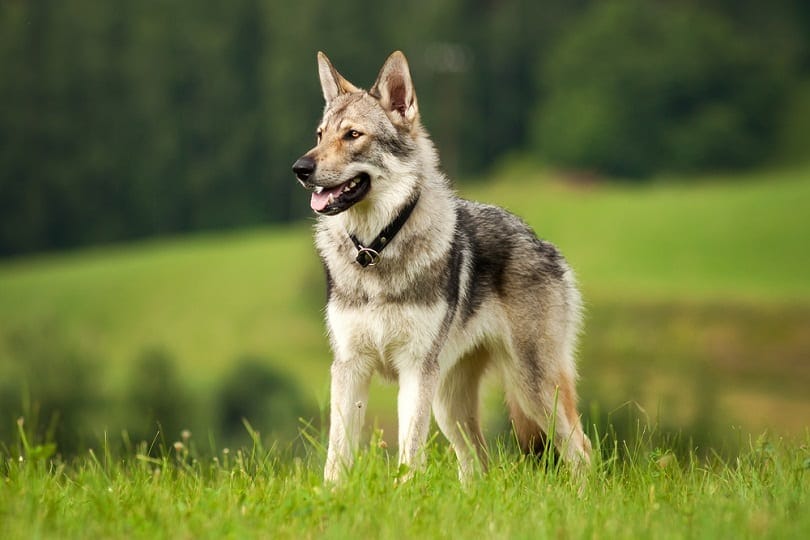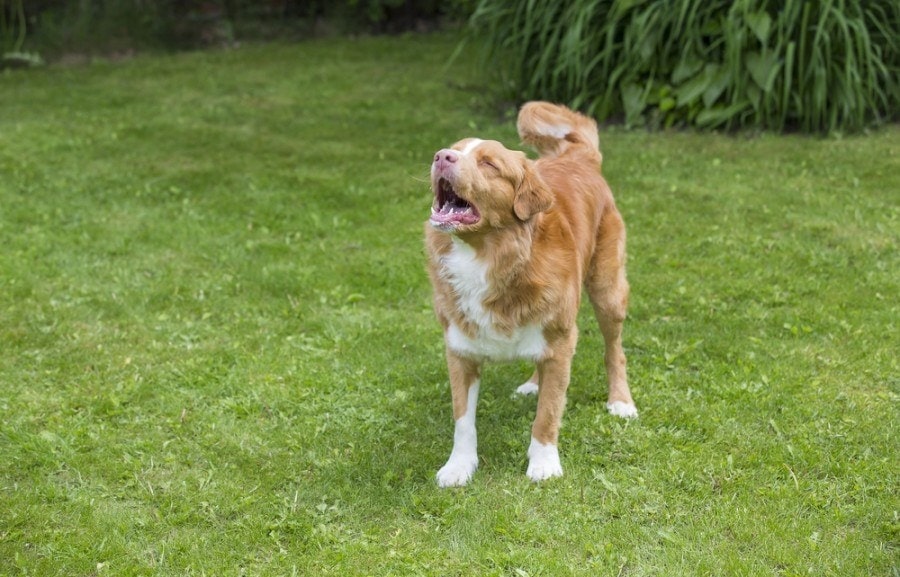How to Travel With a Dog in a Car: 11 Vet-Reviewed Tips

Updated on
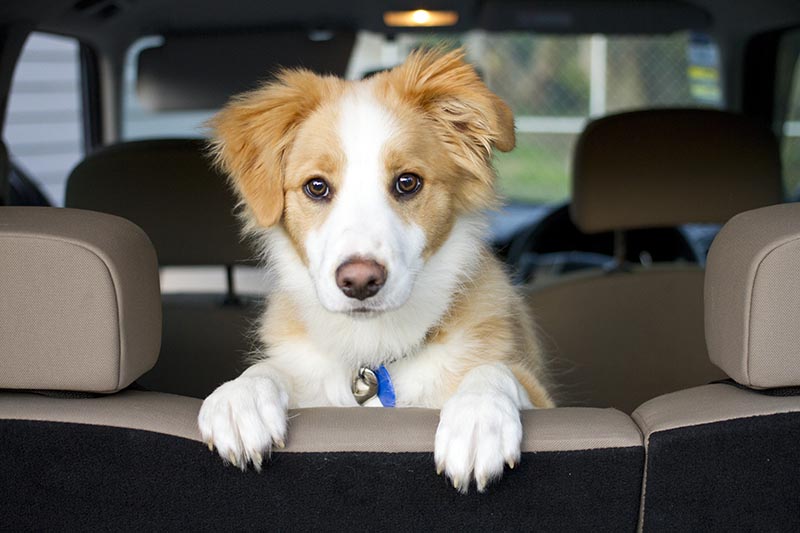
Road trips are a great way to get out of the house and enjoy time away from work by exploring. They’re even better when you can take your canine best friend along.
Cars aren’t inherently geared up to be safe for dogs, though, and there are a few things that you need to sort out before you let your dog join you on a long trip. Investing in a sturdy dog seatbelt1 and making sure the doors and windows are secure are essential, for example.
There are also a few other adjustments to your travel plans that you’ll need to consider to ensure that the journey is as fun for your dog as it is for you.
The 11 Great Tips for Traveling With a Dog in a Car
1. Building Up to Longer Trips
To make a long car ride more comfortable for you and your dog, it’s best to build up their tolerance. Start with short drives around the neighborhood. This will help introduce your dog to the feel of the car in motion and give you an idea of how well they handle car rides in general.
Getting used to the car will help ease their nerves about trips. If they’re a puppy that has never been in a car or they associate car rides with veterinary visits, you need to teach them that car rides are a good thing.

2. Seatbelts or Restraints
For the safety of you, your dog, and everyone else on the road, it’s best if you have a way to keep your dog restrained while the car is in motion. This is important whether you’re driving alone with your dog or you have passengers who can keep them out of trouble for you.
Dog seatbelts are one way to accomplish this. These can either be leashes with seatbelt attachments or straps that hook over the headrest and attach to your dog’s harness. You can also use a dog crate or car seat to keep your dog in one place.
Not only does restraining your dog keep them from jumping around the vehicle while it’s moving, but it’ll also keep them and other passengers safe during an accident, along with helping emergency services tend to the injured without a scared, loose dog threatening their safety.
3. Empty Stomach
Dogs can get carsick just like we do. If you know that your dog suffers from car sickness or just want to make the ride as comfortable as possible for sensitive stomachs, don’t feed them as much before you set out.
For longer car trips, give your dog a small, light meal a few hours before you set off. This will digest easily and still keep your hungry pooch happy while they’re cooped up in the car.
Avoid feeding them big meals during the journey. Take along snacks that they can chew on, but otherwise, wait to feed them their dinner until you’ve reached your destination.
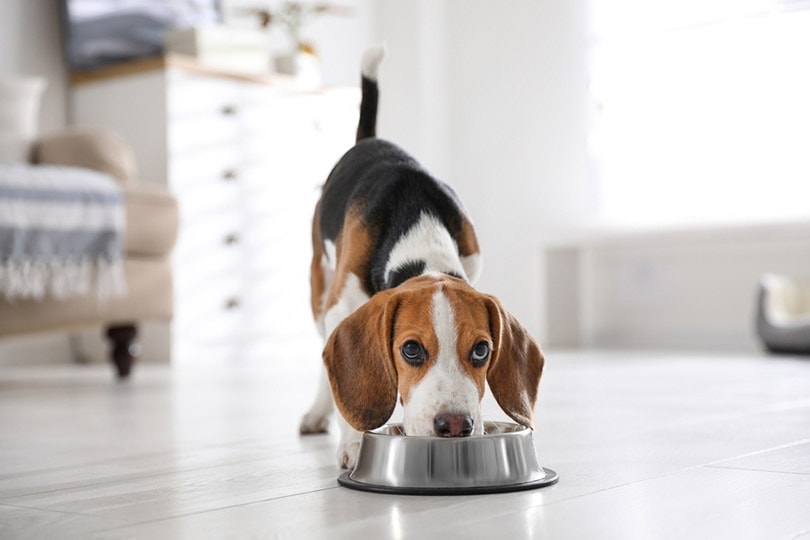
4. Plenty of Water
It might be a bad idea to let your dog eat big meals during car rides, but you need to make sure they drink plenty of water. Driving long distances can make it easy to forget to take breaks, and your dog is unlikely to have free access to water while the car’s moving, especially if you don’t want water spilling everywhere.
Pack a few water bottles and a travel-sized water bowl for your dog, and offer them water every time you stop at gas stations or rest stops. This is especially important if your dog doesn’t like to drink while the car is in motion.
5. Regular Potty Breaks
Car rides can be uncomfortable and boring, for your dog and for you. You might be able to keep yourself distracted from long drives by listening to the radio or chatting with your passengers, but your dog won’t be able to play while they’re restrained in a crate. While you can give them their favorite toys to play with, nothing works as well as taking frequent breaks.
Stopping at rest stops regularly enables you to stretch your legs, take a break from driving, and give your dog much-needed playtime. They’ll be able to go to the bathroom, drink water, and explore for a bit.
A vigorous game of fetch might even wear your dog out enough that they sleep through most of the trip.
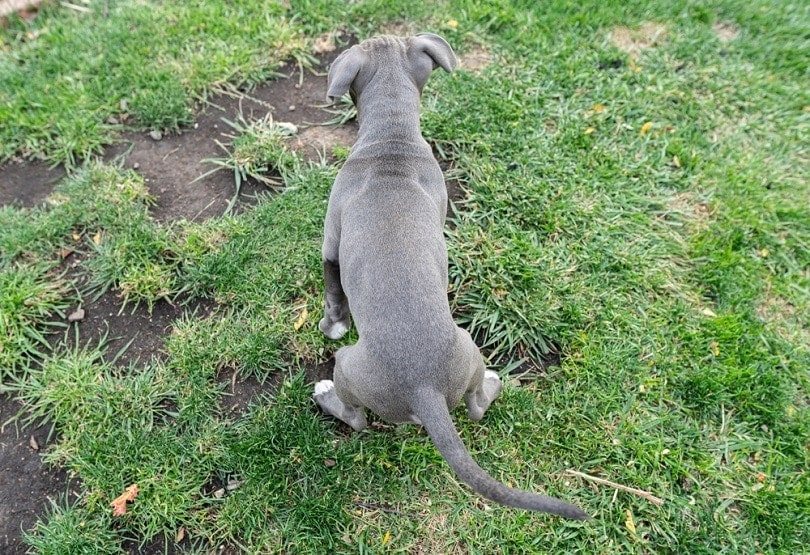
6. Not Leaving Them Unattended
Summer, cars, and dogs don’t mix well. Never leave your dog in a locked car unattended, even for just a few minutes. Cars quickly become far too hot on sunny days, and your dog has a fur coat to worry about too. The opposite is true on frigid winter days. Without the heating running in the car, your dog will quickly get too cold.
It’s not just the health of your dog that you should consider. A well-meaning bystander who sees a dog left alone in a car might smash the window to get them out, even if you’ve only been gone for a few seconds.
7. Canine Travel Kit
Whether you’re taking a week-long road trip or just heading out for the day, you’re likely to only pack a few essentials. If you’re traveling alone, this can be limited to one or two small bags. Once your dog is included, though, there are a few other essentials that you need to consider.
Your canine travel kit should include all the basics: poop bags, a collapsible water dish, a dog first aid kit, your dog’s favorite toy, a few chews, and their favorite treats to snack on while you drive. You may also want to take health and vaccination records with you.
The best part is that most of these doggy essentials are lightweight. If you use a harness, you can attach small bags to it, so your dog can carry their own travel kit and everything that they need is always close at hand.
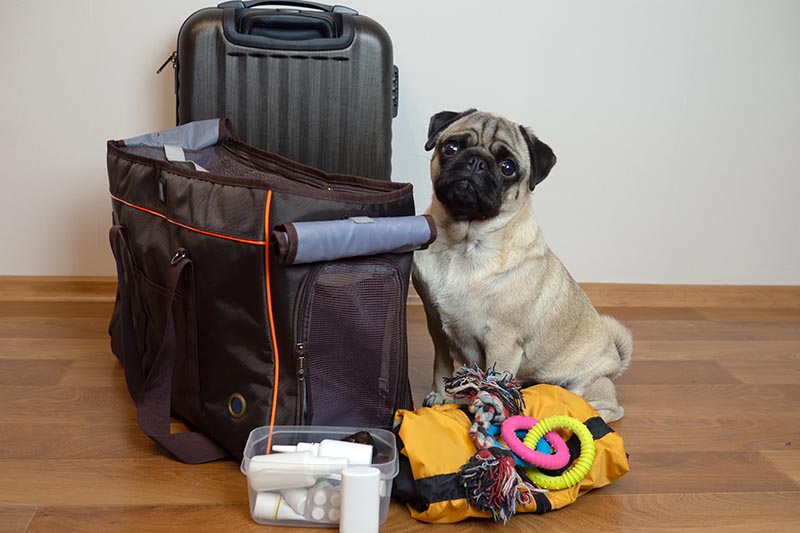
8. Microchipping Your Dog
Your dog should already have a collar and ID tag with your contact information on it, but these aren’t infallible. If your dog loses their collar or tag for any reason, there will be no way for strangers to identify your dog if they get lost. A microchip is a permanent form of identification that is always with your dog.
While it’s not pleasant to consider the possibility of your dog getting lost during your road trip, a microchip will increase the odds of them getting back to you quickly. If someone finds them and takes them to a veterinarian or a shelter, whoever scans the microchip will be able to contact you and get your dog back home.
9. Closed Windows
Many people love to let their dogs stick their heads out of the car windows during long drives. It can be cute and many dogs enjoy it, but it’s a dangerous habit to let your dog develop.
When you’re driving — whether on slow back country roads or busy highways — the wheels kick up a large amount of dirt from the road, and dust can get thrown around by other cars. There’s also the risk of an unrestrained dog spotting a squirrel on the side of the road that they simply must get to immediately.
If you do want to keep the windows open, don’t open them far enough to let your dog stick their head out. Or, only open the windows that your restrained pet can’t reach.

10. No Rides in an Open Truck Bed
Dogs can get muddy and horrifically smelly when you’re adventuring together. In these cases, riding in an enclosed car with them isn’t pleasant. You shouldn’t use this as an excuse to let them ride in the open bed of your truck, though. Packing dry shampoo or wet wipes is often enough to get your dog smelling good enough until you’re back home, or you can even bring a makeshift shower head for on-the-go baths.
If you don’t have enough room in your truck’s cabin for everything that you need to take and your dog, reconsider if you need everything that you’ve packed, find alternative transport, or ask someone to look after your dog while you’re away.
While it’s always sad leaving a dog behind, it’s far safer than risking a serious injury or death by letting them ride in the back of the truck.
11. Local Veterinarians
If you’re in an unfamiliar town, locating a veterinarian can be stressful during emergencies. Unfortunately, accidents happen, and planning ahead is the best way to make a horrible situation easier to handle.
Before you head out on your trip, plan your route. Make a note of all the places that you can stop at for potty breaks and to sleep overnight. For each place, keep a list of numbers for the nearest 24-hour veterinary clinics, especially if you’re unfamiliar with the area you’re road-tripping through. If you’re heading out for a day trip, keep your destination’s local veterinarian’s number handy.
While this might seem excessive, if your dog does get into an accident, you’ll be prepared to handle it.

Final Thoughts
Traveling is fun but stressful, particularly when your dog tags along. While there’s nothing better than going on an adventure with your furry friend, it’s important to keep them safe too. These tips not only will help you keep your dog safe during car rides but also as comfortable as possible. We hope that we have helped you plan for your next trip with your dog!
Related Reads:
- Is It Safe for Dogs to Fly? Flight Options & Preparation
- Benefits of Traveling With Dogs: 10 Advantages & Tips For Your Trip
Featured Image Credit: Aarontphotography, Shutterstock


